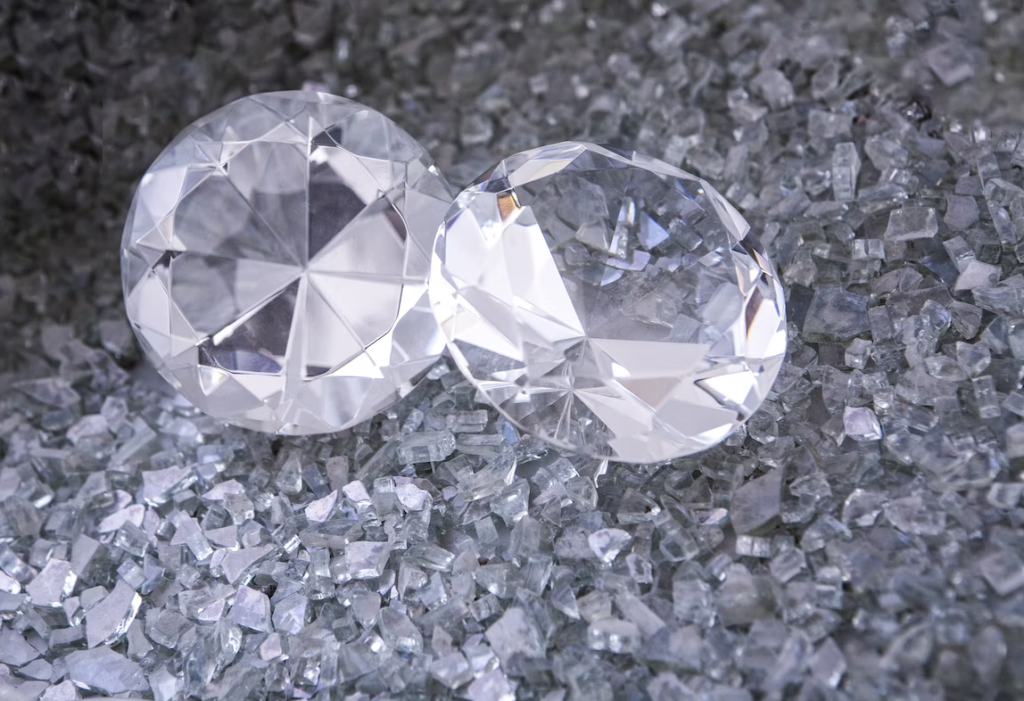There will always be a demand for diamonds, but where we get them is evolving. More and more consumers are opting for ethical and environmentally friendly alternatives to mined diamonds when purchasing high-end jewellery.
Created in a laboratory setting, lab-grown diamonds are an ethical and environmentally friendly alternative to mined diamonds. Yet, are synthetic diamonds truly more popular than their genuine counterparts?

In this article, we’ll discuss whether or not lab-grown diamonds are overtaking natural diamonds as the preferred option for consumers.
This article will enlighten you on a fascinating topic that is shifting the way we view diamonds, whether you’re a diamond enthusiast or just curious about ethical and ecological alternatives, This is a fantastic read just for you!
Lab Grown Diamonds: What Is It?
Diamonds that are manufactured in a laboratory instead of extracted from the ground are called lab-grown diamonds, synthetic diamonds, or cultured diamonds.
High pressure and high temperature (HPHT) or chemical vapour deposition (CVD) are two of the most prevalent synthetic technologies used to simulate diamonds’ natural production.
Lab-grown diamonds are created by inserting a tiny diamond seed into a container and filling the chamber with carbon-rich gases or other ingredients. Natural diamonds are created in the earth’s mantle, which is why the chamber is subjected to high temperatures and pressures.
A diamond crystal is formed as the carbon atoms link together over time, and it may be cut and polished just like a true diamond.
It is impossible to tell the difference between a lab-grown diamond and a natural diamond based on their appearance alone because they have the same chemical and physical properties.
In contrast to natural diamonds, however, synthetics are generally more affordable, and those who worry about the effects of diamond mining on people and the planet may find them to be a more ethical and sustainable option.
Are Most People Buying Lab-Grown Diamonds?
While the market for lab-grown diamonds has expanded quickly in recent years, it still accounts for only a fraction of the diamond industry as a whole.
Natural diamonds still carry important cultural and emotional value, even as lab-grown diamonds are gaining popularity among younger consumers who are more concerned with ethical and environmentally friendly solutions.
In addition, the thought of having a natural diamond that has been produced over billions of years in the earth’s mantle appeals to some buyers.
Yet, in recent years, lab-grown diamonds have become much more accessible, inexpensive, and high-quality.
More people will likely explore buying lab-grown diamonds as an alternative to real diamonds as they become more informed about the negative effects of diamond mining on the environment and society.
Whether to purchase a natural or laboratory-grown diamond is a matter of personal choice.
It’s worth noting that the market for lab-grown diamonds is still developing and that consumer preferences and views about them are always shifting.
More people might think about buying lab-grown diamonds as a more environmentally friendly and morally sound alternative to mined diamonds as they become more accessible and affordable.
Many individuals, however, place a higher value on the cultural and emotional significance of having a natural diamond, which has been produced over billions of years in the earth’s mantle.
In the end, consumers’ decisions regarding whether to purchase a natural or laboratory-grown diamond will be guided by their values and interests.
Lab-Grown Diamonds Benefits
There are several benefits to choosing lab-grown diamonds over natural diamonds:
Ethical And Sustainable Sourcing
One major advantage of laboratory-grown diamonds is that they may be sourced more ethically and sustainably.
Lab-grown diamonds are generated in a controlled environment utilizing advanced technical methods, as opposed to natural diamonds, which are normally mined from the earth.
Diamond mining has a history of human rights abuses, including the use of forced labour and the exploitation of local populations.
As opposed to conventional diamond mining, which leaves a large carbon imprint and raises ethical problems, the production of lab-grown diamonds has a negligible impact on the environment.
The origin of lab-grown diamonds may be determined with relative ease. Consumers can rest easy knowing their diamonds came from a responsible source.
If you care about the world around you and the people in it, buying a lab-grown diamond is a great choice because they are ethically and sustainably sourced. People can help foster a more ethical and open diamond business by opting for lab-grown diamonds.
Cost
Lab-grown diamonds also have the advantage of being inexpensive. When compared to similarly-graded natural diamonds, the price of lab-grown diamonds is typically lower, making them a desirable alternative for shoppers on a tight budget.
Natural diamonds are more expensive because of variables such as their rarity, size, and quality.
Since laboratory-grown diamonds are developed in a contained setting, they require fewer inputs and can be manufactured at a lower cost per carat than their natural counterparts. As a result, consumers may see reduced prices.
In addition, some sizes and shapes of real diamonds can be difficult to come by, but this is not the case with lab-grown diamonds.
As a result, shoppers now have more options when it comes to purchasing lab-grown diamonds, which could lead to additional price reductions.
When compared to mined diamonds, the price of lab-grown diamonds is far lower, making them a more financially feasible option for consumers.
Quality
Another perk of lab-grown diamonds over natural diamonds is their superior quality. The extraordinary quality of lab-grown diamonds is a direct result of the regulated environment in which they are generated and the use of cutting-edge technological methods.
Lab-grown diamonds have several benefits over their natural diamond counterparts, and one of these is that they may be manufactured with fewer imperfections and inclusions.
This is because lab-grown diamonds may have their production parameters finely tuned, resulting in stones with fewer flaws.
In addition, buyers have more alternatives when shopping for the ideal diamond because to the fact that lab-grown diamonds may be made in a wide range of sizes and forms. In contrast, the supply of earth’s natural resources, upon which natural diamonds depend, has limits.
Availability
Because of their widespread availability, lab-grown diamonds are another advantage. Lab-grown diamonds can be manufactured in a controlled environment to satisfy specific specifications, but certain sizes and shapes of natural diamonds can be rare and difficult to locate.
Diamonds made in a laboratory are not restricted by nature’s rules in the same way as mined diamonds are. They can be manufactured in a wide variety of sizes and forms, including fancy cuts and unusual shapes that aren’t always easy to come by in mined diamonds.
This implies that buyers now have a wider selection from which to choose when looking for a suitable diamond.
Moreover, lab-grown diamonds are often more accessible than genuine diamonds since they can be created on demand.
Customers who require a diamond immediately for an important event like an engagement or a special occasion might benefit greatly from our service.
In essence, consumers who value variety in their diamond-buying experiences will like the availability of lab-grown diamonds.
Traceability
One advantage of lab-grown diamonds is that they can be tracked. When compared to lab-grown diamonds, natural diamonds are more difficult to track down since they are not formed in a controlled environment.
As a result, buyers of diamonds will have more confidence that their purchases support responsible practices.
Natural diamonds are often mined using heavy machinery and chemicals, whereas lab-grown diamonds are typically manufactured utilizing renewable energy sources, such as solar and wind power, and do not have the same environmental impact.
Conclusion
There are many advantages to using lab-grown diamonds instead of mined ones. Lab-grown diamonds offer a responsible and sustainable alternative to natural diamonds due to their ethical and sustainable source, excellent quality, widespread availability, and clear audit trails.
As a result, customers can buy with confidence that they are doing right by society and the environment without sacrificing the beauty or quality of their diamonds.
More people are interested in purchasing lab-grown diamonds, which bodes well for a more sustainable and open diamond industry.
